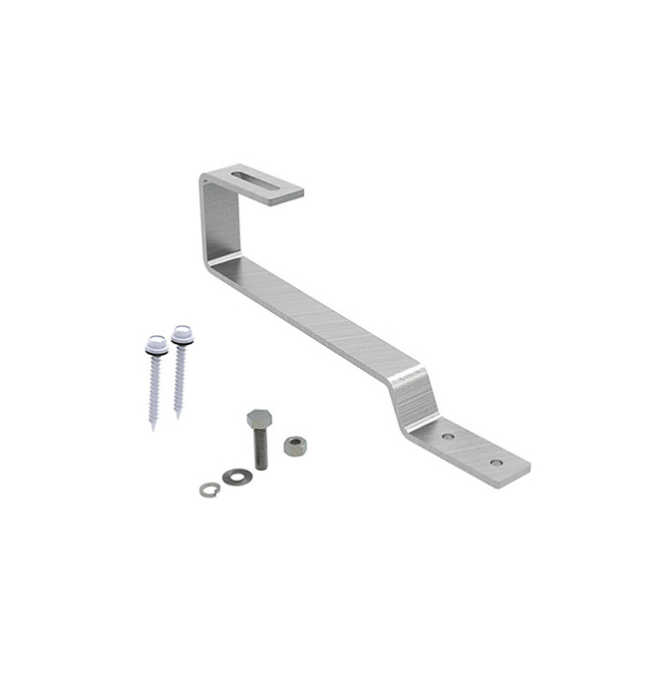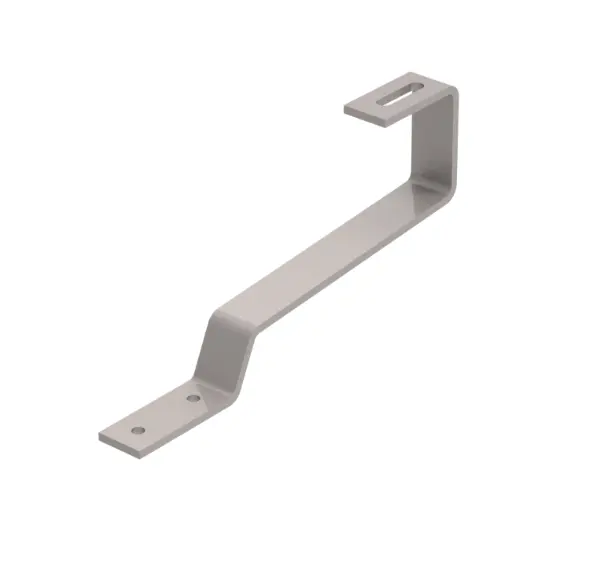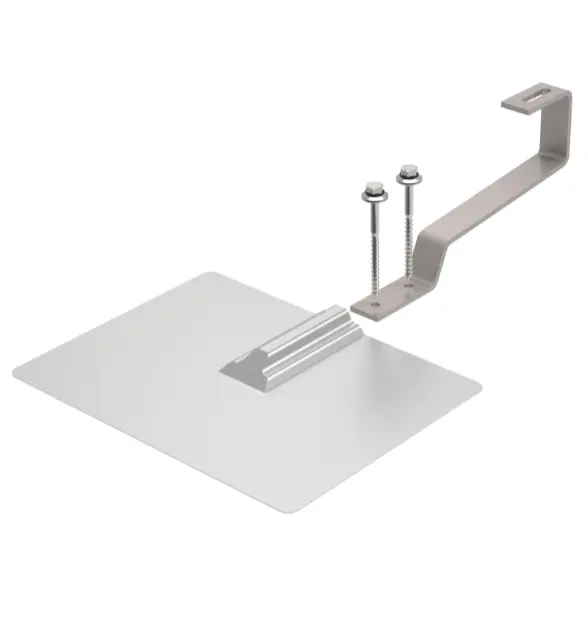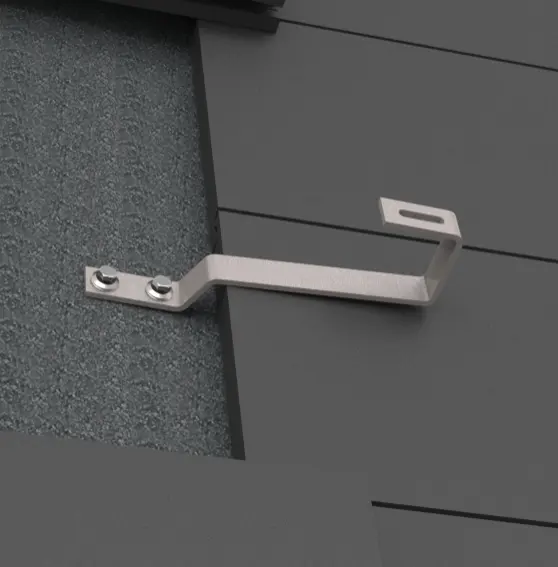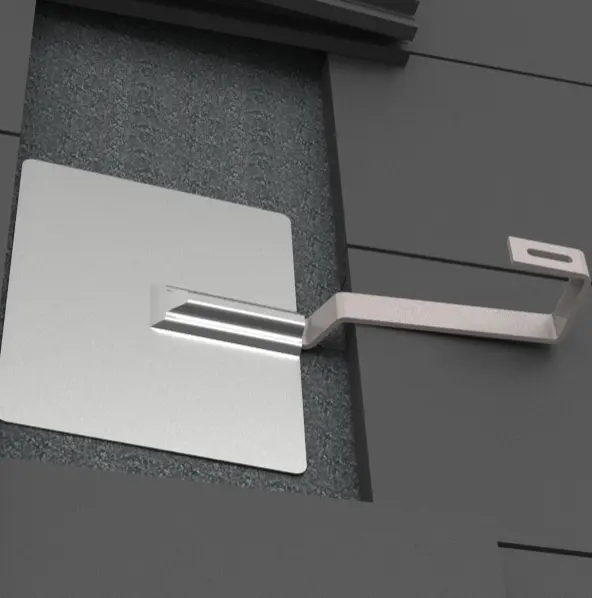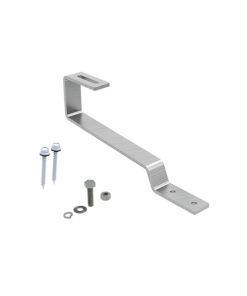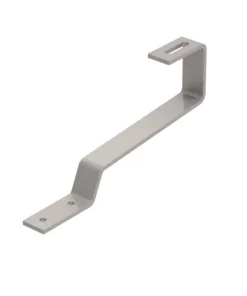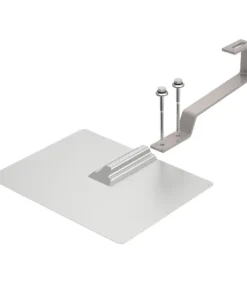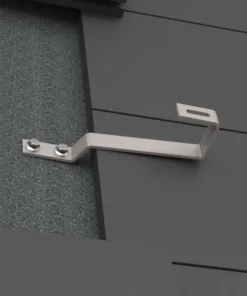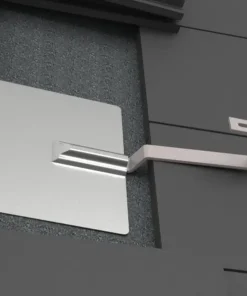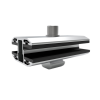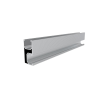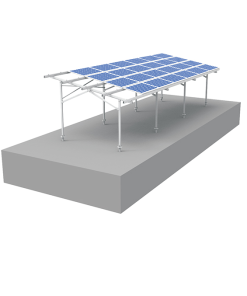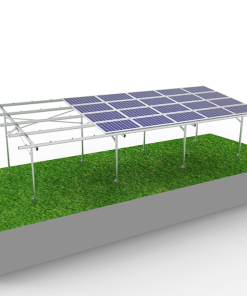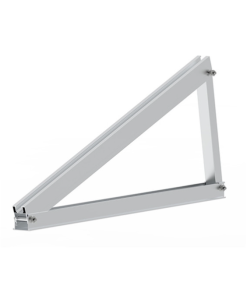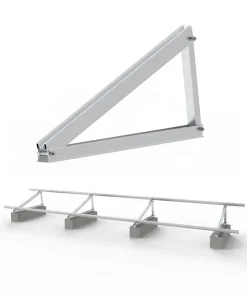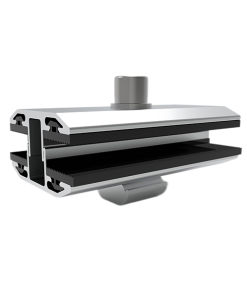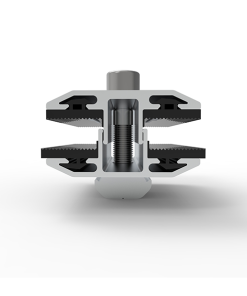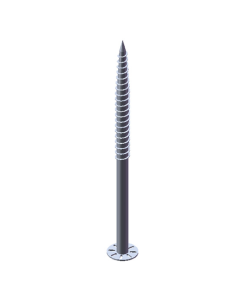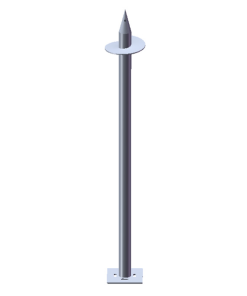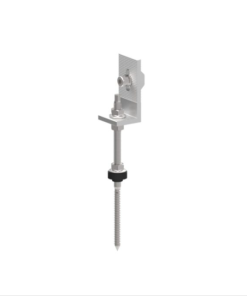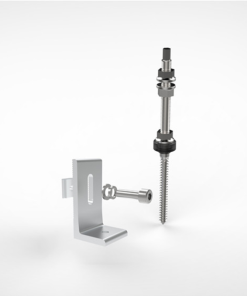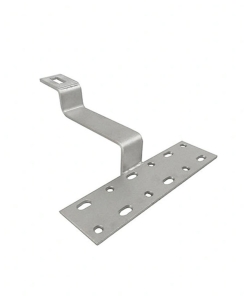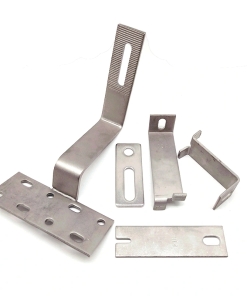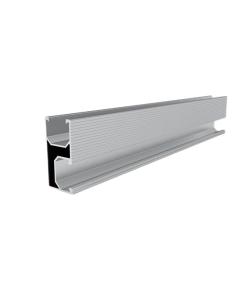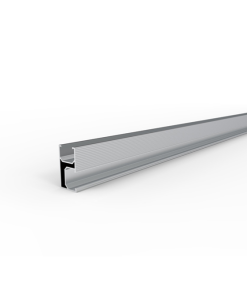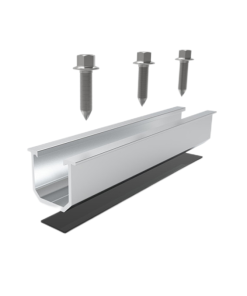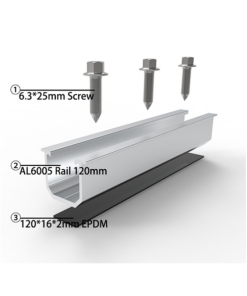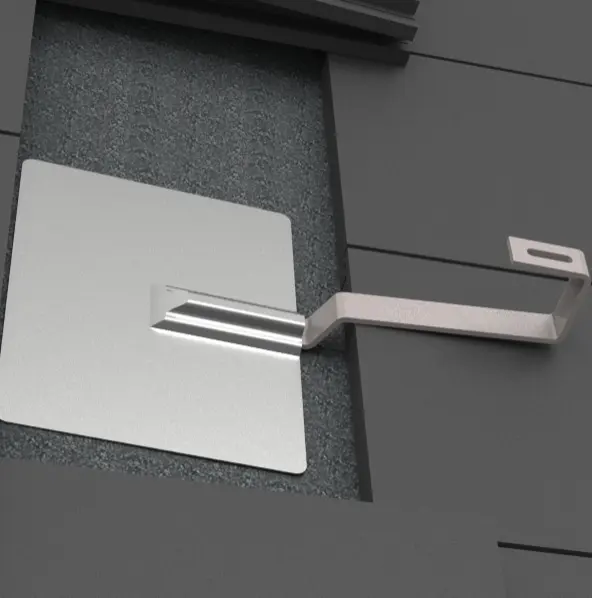
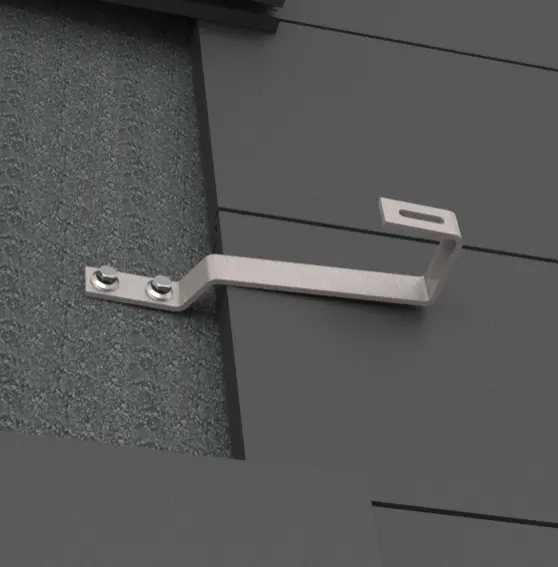
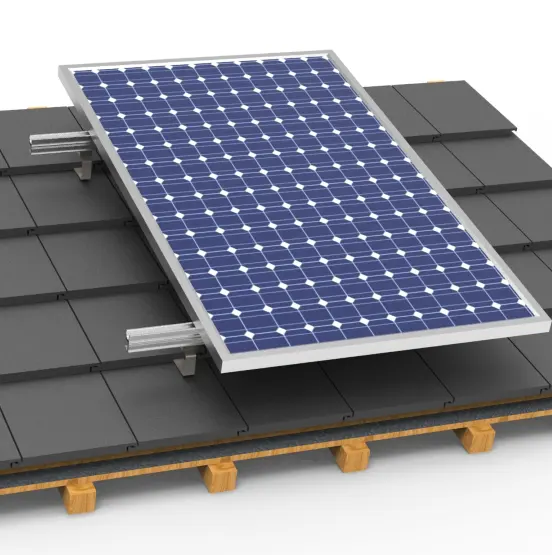
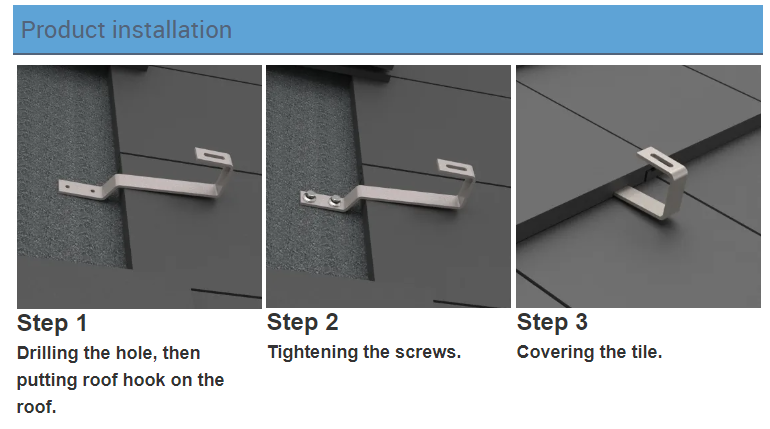
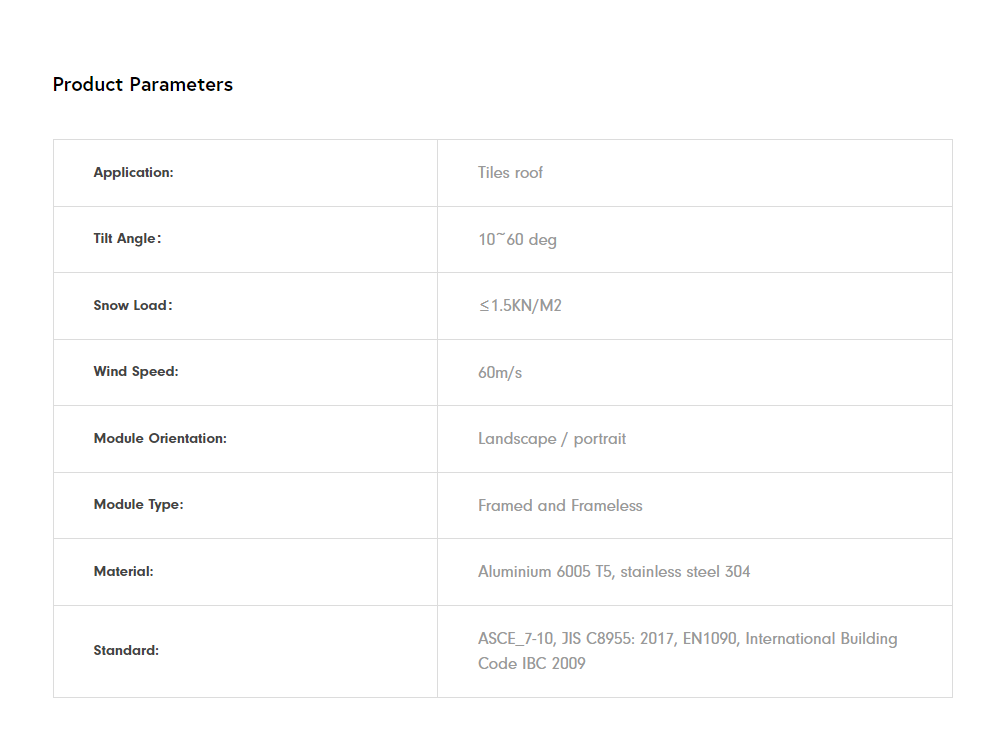
Overview
Solar mount roof hook is engineered for the maximum flexibility possible in designing and planning for the commercial and residential roof solar system. lt is applicable to install the usual framed module to flush with the pitched roof. The special extruded aluminum rail, the tilt-in module, the clamp kit and the various roof hooks can be high pre-assembly and make the installation easy and quick to save your labor cost and time. The customized length can eliminate the weld and cut onsite to keep the high anticorrosive performance,the structure strength and the appearance.
Offer unmatched durability: with all structural components comprised of high class stainless steel and anodized aluminum alloy, it is designed for twenty years service life and backed by ten years warranty.
Solar Mount Roof Hook Product Features
- Flexible rooftop mount system
- Significant savings
- High module compatibility
- Static reliability
- Maximum service life
Solar Mount Roof Hook Custom Options
- Size
- Materials
- Functionality Requirements
- Additional options depending on your specific installation conditions
Photovoltaic Mounting Installation Tips
The installation of solar PV mounting structures is a crucial step in the creation of a reliable and efficient solar power system. Here are some essential tips for installing these structures:
1. Choose the optimal location
Carefully select the site where to install the PV mounting structure .Choose a location that is free from obstacles that could cause shading or limit the amount of sunlight reaching the panels. The site should also have the ideal inclination angle for optimal energy absorption.
2. Account for wind loads
PV mounting structures must be able to withstand harsh weather conditions, including strong winds. It is essential to account for wind loads when designing the structure. The region and the height of the structure determines the wind force.
3. Proper grounding
Proper grounding of the PV mounting structure is essential for the system's safe and efficient operation. Grounding of the metal structure provides a path of least resistance for electrical charges and helps prevent any electrical damage to the system.
4. Use the right tools and equipment
Using the correct tools and equipment for the installation process is crucial. You will need tools such as power drills, screwdrivers, torque wrenches, and other precision instruments designed specifically for installation.
5. Follow the manufacturer's guidelines
It is vital to follow the manufacturer's instructions and guidelines throughout the installation process. You should mark the installation points carefully before drilling or attaching the PV mounting structure. Make sure to align the screws and bolts correctly and use the appropriate torque to ensure the structure is stable and secure.
By following these tips, you can ensure a successful installation of PV mounting structures. You will create a reliable and efficient solar power system that will provide clean energy for many years to come.
